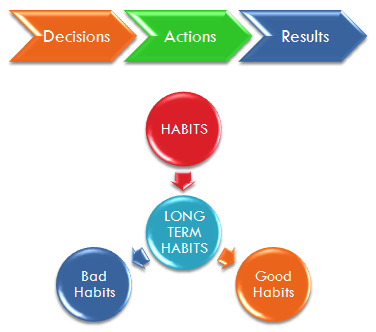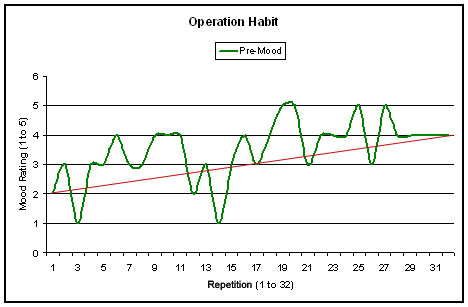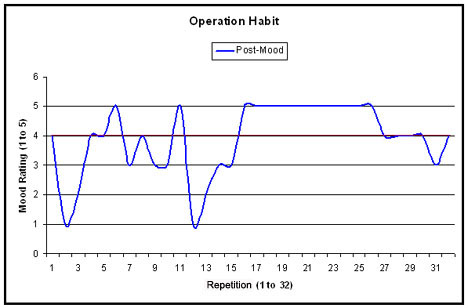The Operation Habit Challenge
 I sat in the green plastic chair and tried not to think about the amount of weight that the scale just told me I had gained. Then the Weight Watchers group leader said “They say it takes 32 repetitions of a behavior to build a habit—I don’t know if it’s true, but that’s what they say.” I was struck by the idea of building a habit. I work so often with people who are trying to change behavior and I felt pretty foolish that I never conceptualized that as “building a good habit” in a simple, functional way. I began to gnaw at this idea.
I sat in the green plastic chair and tried not to think about the amount of weight that the scale just told me I had gained. Then the Weight Watchers group leader said “They say it takes 32 repetitions of a behavior to build a habit—I don’t know if it’s true, but that’s what they say.” I was struck by the idea of building a habit. I work so often with people who are trying to change behavior and I felt pretty foolish that I never conceptualized that as “building a good habit” in a simple, functional way. I began to gnaw at this idea.
I’ve been a member of Weight Watchers for a number of years—ever since I walked into a meeting to observe for school and found that it was run like group therapy. Not every leader runs one like that, but this leader says “If you want to talk about recipes for an hour; that’s fine. Find another class.”
I have no shame in admitting that I had been struggling for the weeks prior to December and was dreading the Holiday Fifteen Pounds that I had gained last year in that cookie laden stretch from Thanksgiving to Christmas Day. I had been making small changes, but those small changes would most surely be overwhelmed. I had been dithering around with the idea of exercise, but I hate exercise.
Then I struck on a notion borne of years my years as an addiction therapist. People who seek out a habit do so in a better mood than I surely do before I exercise and they have much more desire to complete the habitual behavior, even if they’re in a crappy mood. Could I build an exercise habit in which I actually sought out the vile practice?
I looked for studies. There were no studies. So, I did my own, and dubbed it “Operation Habit” with the Twitter hashtag #OperationHabit.
The Practice
The practice itself was essentially simple. I set out to exercise five out of seven days of the week (unheard of!) following a series of DVDs that I had bought many years ago. I dusted them off, like Indy a tomb and used Twitter and Facebook to track my mood before and after each session of exercise.
It looked like this entry from December 18th:
#OperationHabit 17: Pre-Mood: Weary. Post-Mood: energized.
Simple, right?
The hypothesis was just as simple: Could you build a habit in 32 repetitions of a behavior as identified by an increase in mood prior to the behavior, in contemplation of fulfilling the behavior.
To put it another way: Could I show myself that I was building a habit because the idea of doing the habitual thing would grow to appeal to me more.
The Findings
Let’s break out some charts for y’all.
 This is the chart of the “Pre-Mood” ratings. As you could see in the sample tweet, I wasn’t totally scientific in my recording; I was more seeing it as a diary entry. So once I recorded all my moods, I needed to scale them. Using my mysterious powers of psychotherapy, I came up with a one to five system.
This is the chart of the “Pre-Mood” ratings. As you could see in the sample tweet, I wasn’t totally scientific in my recording; I was more seeing it as a diary entry. So once I recorded all my moods, I needed to scale them. Using my mysterious powers of psychotherapy, I came up with a one to five system.
5 = Very Positive
4 = Positive
3 = Neutral
2 = Negative
1 = Very Negative
In my life, before committing to this study, I most often hovered around the negative or very negative range. As the study progressed, I found this no longer to be true.
 This is the chart of the “Post-Mood” ratings, on the same one to five scale.
This is the chart of the “Post-Mood” ratings, on the same one to five scale.
As the study focused more on the “Pre-Mood” changes, the Post-Mood ranking was offered as a comparison. I’m sure I can pull more interesting data about how the two moods flux in relation to each other, but that’s not for today. Interestingly, the mood started on “Positive” and ended on “Positive.”
Some other interesting trends are revealed by the data.
- – Though there were peaks and valleys, the study noted a 2 point increase from “Negative” to “Positive” pre-mood.
- – 18 of the repetitions noted pre-moods that were “Positive” or higher, with no “Negative” moods listed past repetition 14.
- – The majority of pre-moods for repetitions 16-32 were noted as “Positive” or higher.
- – Most of the “Negative” pre-moods had an external trigger, or were a response to emotional stimuli outside the exercises itself. (You can find a tweet or a post about a certain night of “Baby Bedlam” and many work week days listed “weary” which had to do with general work day exhaustion.)
- – In comparison of the “Pre-Mood” chart and the “Post-Mood” chart, it is interesting that there is an extreme low, right at the mid point, followed by extreme highs. This is where I would have given up, in the past. I think this is where many of us give up. The novelty had worn off and I wasn’t charged up. I changed my work out, changed intensity when I needed to and sometimes pushed myself harder. I found I needed a challenge to get my “Post-Mood” back up.
In conclusion, there might really be something to this. But, to find out for sure I need your help.
The Challenge
 Now it’s your turn. I cannot say I offered you inconclusive proof that you can build a positive health habit in 32 repetitions. I will stand by the personal evidence that it is highly possible. But more data would be crucial to this determination. I’d enjoy having that data, but I’m hungry to help people feel like they can change like I feel that I have changed. If you’ve struggled keeping any positive health habit, you know how defeatist it can feel.
Now it’s your turn. I cannot say I offered you inconclusive proof that you can build a positive health habit in 32 repetitions. I will stand by the personal evidence that it is highly possible. But more data would be crucial to this determination. I’d enjoy having that data, but I’m hungry to help people feel like they can change like I feel that I have changed. If you’ve struggled keeping any positive health habit, you know how defeatist it can feel.
Here’s the deal.
1) Pick a positive health habit which you’ve always known you needed or have not succeeded with in the past. Commit to it here, in the comments so that we know who the competitors are.
2) Complete 32 repetitions of that behavior. It’s up to you if you want to do it once every day, or skip a day or two.
3) Record your Pre-Mood and Post-Mood online using the one to five scale above. Use the hashtage #OperationHabit, if you can, or just note it as your system allows. Make a copy of your record in an MS Word document.
4) You have until January 20th to commit to the challenge. Email me the MS Word document and a link to the online profile which you used to track the data on March 9th (7 weeks in between).
See that gift card? It’s for $25, and it’s real. I smudged out the numbers myself. It’s what the winner will receive. Your MS Word document and profile link which proves you completed the challenge is your entry into a random drawing for twenty-five smackers. The winner will be revealed on Friday, March 16th. But it’s my hope that everyone will win a new habit.
Game on!

